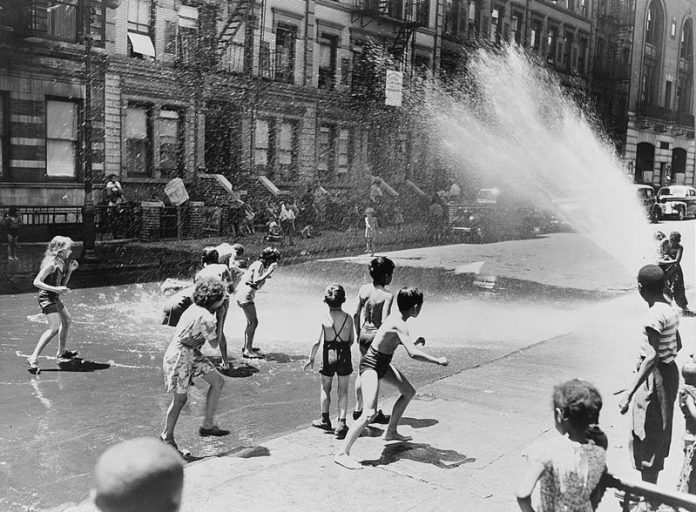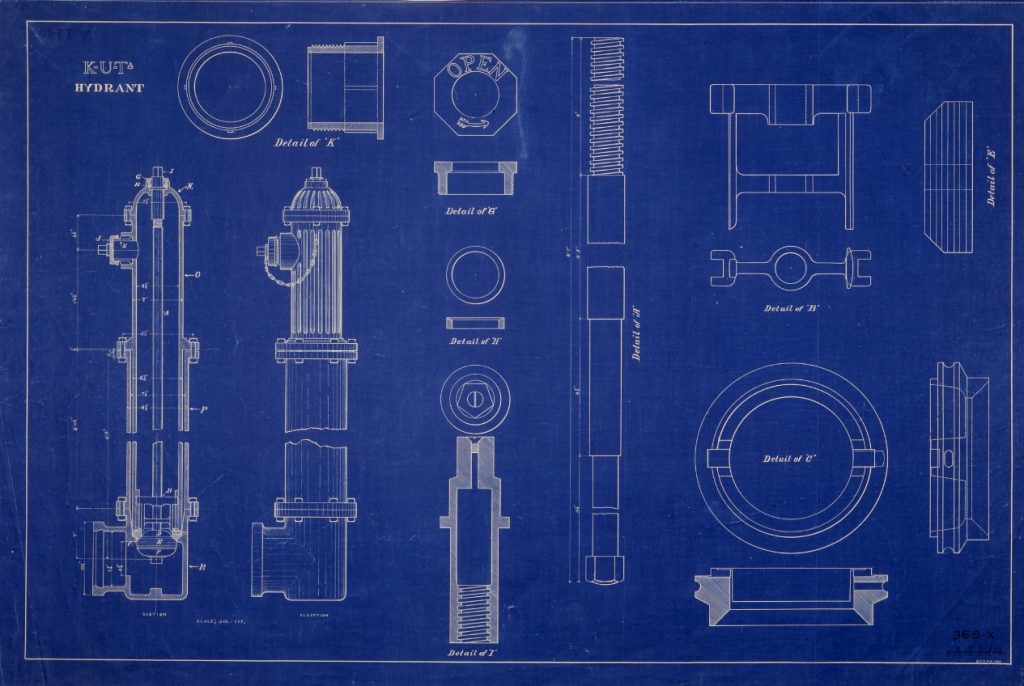
Cities should consider modifying hydrants for civic enrichment. By Owen Weinstein
Fire hydrants, like the water within them, are taken for granted until they are desperately needed. But with the need to make urban water systems more resilient, it’s time for hydrants to step into the spotlight even when there’s no fire.
Research conducted at the University of Virginia, which led to a design that is known as The Civic Hydrant, shows that it is ecologically cleaner, economically cheaper, and more socially equitable to provide modifications and hybridisations to hydrants, in ways that make them a water amenity available to the public. Doing so helps cities see clean drinking water as a public right rather than a commercial good.
Centralised water infrastructure–of which fire hydrants are a key component–is often inherently vulnerable to failure. The command and control logic that governs water systems is quietly efficient, but as a result also opaque to the public. Despite countless efforts to educate people, too few citizens know where their drinking water comes from or where it goes.
Fire hydrants can convey water’s value without words. The hydrants–also known as fireplugs or fire pumps–are by design among the most public and evenly distributed manifestations of a centralised water system.
Urban hydrants are often pressurised from the same water mains as drinking water. This makes them a potential source of clean drinking water throughout the city. Better still, because their placement is dependent on population density and building use, fire hydrants are present exactly where needed most.
In economically disadvantaged areas, public libraries, schools and parks may fall into neglect or disrepair; but hydrants are consistently maintained regardless of the socio-economic power of a neighbourhood. Beyond their rare role in fire suppression, hydrants could become a universal everyday public amenity, yielding benefits round the clock.
Such a transformation would involve a dramatic reversal of urban perception. The patent history of fire hydrants in the United States tells a story of control and fear of public access. To win approval for his locking device, Jerry K Pollard warns that since the devices “provide a ready and accessible source of clean and fresh water, problems have arisen with the theft of water from unmetered fire hydrants.”

Yet one man’s fear is a city’s opportunity to celebrate; for this problem offers its own solution. The public will always demand access to clean drinking water in public spaces. Whether to cool off in the summer or water a neglected tree box, citizens will gain access–legally or illegally. The better ‘protected’ a fire hydrant seems, the more damage it may sustain from those seeking access, leading to a needless potential arms race of hardening infrastructure and more dramatic failures. The protectionist mentality also makes the hydrant either invisible to the public or a symbol of an inaccessible social resource, controlled by strangers.
It is thus hardly surprising that breaking open hydrants is a source of municipal concern–especially in hot and humid cities–and at the same time a source of pride verging on a right-of-passage in underserved communities. Such tensions are clear in websites instructing viewers how to crack open fire hydrants, or stories of how city dwellers have done so for centuries.
In recent years, cities have found it cheaper and safer to provide controlled and supervised access to the water, rather than deal with the cost and hazards posed by intentional breakage.
The Civic Hydrants proposal suggests how existing fire hydrant systems can be modified to provide access and awareness to the potable drinking water system that currently exists unrecognised, under monitored, and taken for granted on nearly every corner of the city.
By making water a visible and active part of daily life, the hydrants become a necessary instrument of public accountability. Every hydrant becomes a potential test site for the citizen scientist, a rallying point for the public advocate, a permanent place for families to gather, and a symbol of the shared rights to and responsibilities for, cool, clean, potable water.







